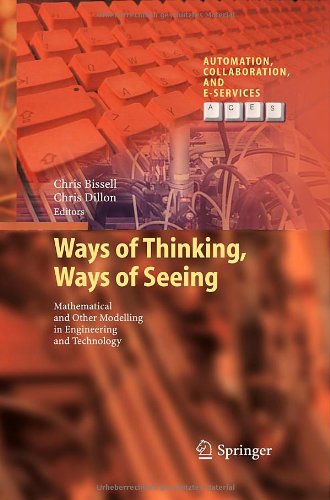

Most ebook files are in PDF format, so you can easily read them using various software such as Foxit Reader or directly on the Google Chrome browser.
Some ebook files are released by publishers in other formats such as .awz, .mobi, .epub, .fb2, etc. You may need to install specific software to read these formats on mobile/PC, such as Calibre.
Please read the tutorial at this link: https://ebookbell.com/faq
We offer FREE conversion to the popular formats you request; however, this may take some time. Therefore, right after payment, please email us, and we will try to provide the service as quickly as possible.
For some exceptional file formats or broken links (if any), please refrain from opening any disputes. Instead, email us first, and we will try to assist within a maximum of 6 hours.
EbookBell Team

4.8
34 reviewsThis fascinating book examines some of the characteristics of technological/engineering models that are likely to be unfamiliar to those who are interested primarily in the history and philosophy of science and mathematics, and which differentiate technological models from scientific and mathematical ones. Themes that are highlighted include:
• the role of language: the models developed for engineering design have resulted in new ways of talking about technological systems
• communities of practice: related to the previous point, particular engineering communities have particular ways of sharing and developing knowledge
• graphical (re)presentation: engineers have developed many ways of reducing quite complex mathematical models to more simple representations
• reification: highly abstract mathematical models are turned into ‘objects’ that can be manipulated almost like components of a physical system
• machines: not only the currently ubiquitous digital computer, but also older analogue devices – slide rules, physical models, wind tunnels and other small-scale simulators, as well as mechanical, electrical and electronic analogue computers
• mathematics and modelling as a bridging tool between disciplines
This book studies primarily modelling in technological practice. It is worth noting that models of the type considered in the book are not always highly valued in formal engineering education at university level, which often takes an “applied science” approach close to that of the natural sciences (something that can result in disaffection on the part of students). Yet in an informal context, such as laboratories, industrial placements, and so on, a very different situation obtains. A number of chapters considers such epistemological aspects, as well as the status of different types of models within the engineering education community.
The book will be of interest to practising engineers and technologists; sociologists of science and technology; and historians and philosophers of science and mathematics. It will also be written in a way that will be accessible to non-specialists.